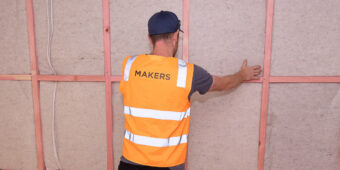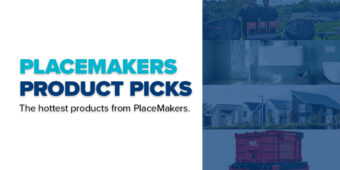IMPORTANT TO KEEP BOTTOM PLATE WHOLE
25 Nov 2021, Learn, Prove Your Know How, Technical

Recent calls to the BRANZ helpline asked about the implications of removing a section of bottom plate from wall framing. Good planning is needed to avoid this as it compromises the wall’s loadbearing integrity and means it will no longer act as a bracing wall
A BRANZ helpline caller described having seen a situation where a section of bottom plate was removed to accommodate service pipes through the wall framing. They had concerns about the effect on the structural and bracing integrity of the wall and how it affected the wall’s thermal and airtightness capability.
Turns out they were right to be concerned. Read more about why below.
Poor planning often a cause
The first question to be asked is why sections of bottom plate are being removed from wall framing at all. The reasons usually involve poor planning:
- Designers not considering where service pipes will be located, instead leaving decisions to tradespeople.
- Tradespeople not understanding the implications of removing sections of wall framing.
- Insufficient oversight on the construction site – there is often no one person who has overall responsibility for the building work.
- Owners/clients not wanting to see service pipes on the outside (or inside) of the building.
The bottom plate has an important function
The function of a bottom plate is to connect the wall to the floor. Vertical loads are transferred downwards and evenly distributed through the whole wall. The only area of wall framing where there are no bottom plates should be at doorway openings, which are designed so that vertical loads are transferred down on either side of the opening.
When a section of the bottom plate is removed, the load is no longer evenly distributed down through the whole wall, compromising the wall’s loadbearing integrity. The wall can no longer be used as a bracing wall over its entire length, and the bracing layout for that storey will need to be redesigned around what is left.
NZS 3604 requirements for bottom plates
NZS 3604:2011 Timber-framed buildings states that bottom plates must be supported by timber floor framing or a concrete floor slab. It sets out fixing requirements for:
- Timber floor framing – nailing according to Table 8.19.
- Concrete slab floor – cast-in anchors or proprietary post-fixed anchors according to paragraph 7.5.12.
Holes or notches in bottom plates
NZS 3604:2011 does not describe any situations where a section of bottom plate may be removed.
It does describe fixing requirements where holes or notches are cut into bottom plates. Paragraph 8.7.5.2 states that, where a hole or notch is more than 50% of the width of the bottom plate, the plate must be fixed against sideways movement with one 100 × 3.75 mm nail on each side of the hole or notch (Figure 1). This applies to bottom plates fixed to timber floor framing only.
There are no options for securing a bottom plate with a hole or notch cut in that is fixed to a concrete floor slab. This suggests that the intent is that there should not be any holes or notches cut into the bottom plate.
Cutting into other parts of wall framing
A vent pipe is sometimes also required to be installed with a wastepipe, passing through the dwangs and top plate of the wall framing. This means that, where a bottom plate has been cut, notched or even removed, more of the wall framing may also have been removed, undermining even further the integrity of the wall framing.

Good planning required
Good planning at the design stage of a building project is the solution to avoid the need to remove sections of bottom plate.
The initial responsibility for the location of service pipes lies with the designer. They should consider at the design stage how services such as wastepipes and vents can be accommodated in the building design without compromising the building structure.
Options to ensure that service pipes do not need to be located within the wall framing include:
- Locating rooms requiring pipework such as kitchen, bathrooms and laundry in close proximity to one another and incorporating a service duct through which the pipes can be run.
- Locating fittings so that pipes can go down through the floor rather than the wall framing.
Alternatively, use deeper wall framing so that holes or notches remain less than 50% of the width of the bottom plate. This also allows for installing thicker wall insulation.
On-site management
Contractors and tradespeople also have a second level of responsibility for ensuring that the structural integrity of the building is maintained. Recommendations for on-site situations include:
- Ensuring that tradespeople know that structural elements such as bottom plates must not be cut through.
- Consulting the architect/designer or engineer where a conflict of location of building elements occurs.
- Appointing one person on site to have oversight of the whole project.
Following these steps will help ensure that bottom plates are not compromised during the construction process and ensure that the structural and bracing integrity as well as thermal and airtightness capability of the building are maintained.

Article by Alide Elkink. First published in Issue 186 of BRANZ Build magazine www.buildmagazine.org.nz. Words and figures supplied by BRANZ.
Register to earn LBP Points Sign in
1 Comment
Leave a Reply
You must be logged in to post a comment.




done